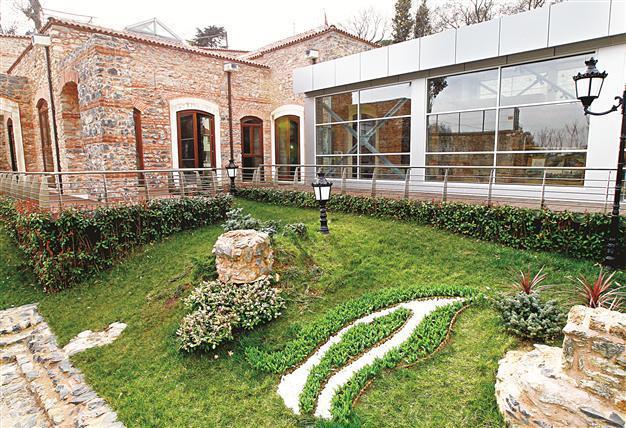Everything about tulips in a museum
ISTANBUL - Anatolia News Agency

The Ottoman horse barns in Istanbul’s Emirgan Wood had been restored and turned into the Tulip Museum. It features two exhibition halls on an area of 1,500 square meters. AA photo
Known as the city of tulips in Ottoman times, Istanbul celebrates its characteristic flower in a new museum. In order to preserve tulip culture for future generations, the Istanbul Metropolitan Municipality formed the Istanbul Tulip Association and a Tulip Museum in the Emirgan Woods. The association created a smartphone application called “Lalezar,” through which visitors can obtain information on the characteristics of each featured tulip by scanning a barcode on the flower’s label.
“There are tulip museums in the world, particularly in the Netherlands but these countries do not have much history with tulips. Even horse saddles, caftans, knives, kettles and wall decorations that we brought from Central Asia have tulip figures. We have more cultural materials. This is why the idea of establishing a museum to display all these materials was proposed,” Municipal official Mehmet İhsan Şimşek said.
One language in world
“The tulip symbolizes God and union in Islam. Tulips are one language in the world. It is a historical factor for us. It is also a name. As for its production, there are nearly 100 million works on tulips in Turkey,” Şimşek said, adding that the Istanbul Tulip Association would work to develop the types of tulips featured. After searching for the “turan narcissus” tulip in İzmir’s village of Bayındır, they began work to cultivate the flower and bring it to the Turkish market.
Şimşek said that what are known as the Ottoman horse barns in the Emirgan Wood had been restored and turned into the museum. Featuring two exhibition halls on an area of 1,500 square meters, he added that one of the exhibition halls would serve as a museum after the placement of the objects and the other would be used for art events.
“Among [the objects in the museum] is a plow used to plant tulips, a sieve to clean out tulips, a tulip motif on a manuscript, a tulip brooch, dried tulips, etc. There are also books and printings on tulips in the museum. All these objects exist in world tulip museums. The Dutch museum displays [contemporary] objects but we want to display historical ones, mostly,” he said.
Şimşek said that “Lalezar” is the first project of the Istanbul Tulip Association and would be introduced at this year’s Tulip Festival, as people visiting parks and gardens during tulip season are curious about the name and features of the flower. “We put signboards up but some people cannot read them. Everyone has a smartphone. The association has prepared an app for these phones. We’ll put barcodes next to tulips and they will be able to read the barcode with the phones. Tulip gardens in the city will be seen with this app. People will also be able to share on social media. We may also send them tulip bulbs when they leave their address.”
Şimşek said that the Tulip Festival would be organized between April 1 and 30 and the opening made on April 7. He said that the festival center will be Emirgan Woods and Göztepe Rose Garden, and that there would also be various events such as a tennis tournament as part of the festival.
Some 270 types of tulips will be planted in Istanbul and can be seen at Soğanlı Plants Park, Göztepe Rose Garden, Büyükçamlıca, Küçükçamlıca, Hidiv, Çubuklu, Beykoz, Fethipaşa, Emirgan, Yıldız and Beykoz Woods and Gülhane Park, according to Şimşek.
